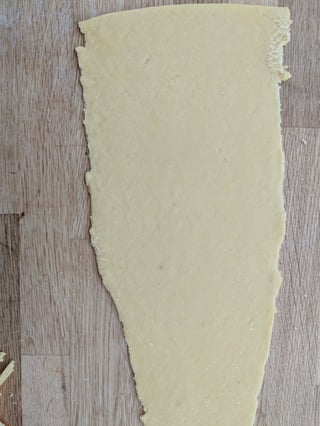Love to check out the threads on the board, now finally decided to make an account in the hope some of you could help me out.
Recently started and dough-making is going quite well now. In the below images I prepared as follows:
- Using Grano Duro 1 egg/100g and some water
- Kneed, work, the dough for about 5 minutes.
- Let it sit, airtight, on counter for 30 minutes
- Use a pin to roll it out to a thickness of 1 cm before starting to use the pastamaker's rollers
My problem is that the spaghetti is sticking together after emerging from the rollers. I'm able to pull apart some of it, but barely 1/3rd. The rest might as well be parpadelle... I'm in doubt on whether my methods are at play, or the pasta maker itself. With cooking, it's usually the latter I think :)
Pic 1: 'rough' sheet after rolling at medium thickness. I trim the edges after so that it's a nice square.
Pic 2: I feed it through the pasta machine. The spaghetti is coming out but with a 'fleece' in between. It's not easy to pull apart manually, it destroys the spaghetti strings.
Pic3: The alignment of the rollers in my pasta maker. At least I don't see them being misaligned too much, are they?
What have I tried so far: - Different thinknesses of the sheet when I push them through the spaghetti rollers - Adding olive oil, adding more water rather than egg - Letting the dough sheets dry on counter for 30 min, and once for 3 hours (which was clearly too long)
Love to hear if you have advice!



